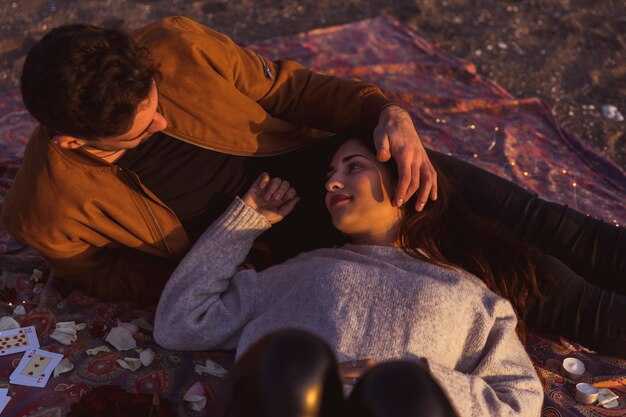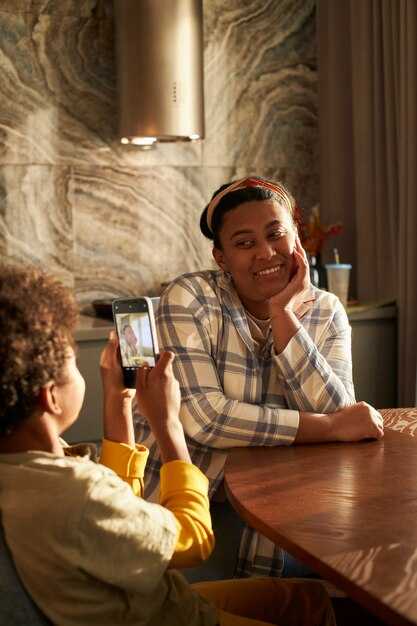Choose a themed city scavenger hunt that hits five precise stops: barwick bakery (order a cinnamon roll and split a $6 dough sample), the native heights observation deck (buy two $8 tickets), an indie theater that lists late shows (check schedule online), a riverside bench somewhere near the old mill, and a community center hosting volunteer art sessions; allocate 3–4 hours, bring printed clues and a small prize, and budget $30–60.
If one person could be spooked by heights, swap the rooftop with an elevated tram ride; discuss comfort limits before tickets purchased. Keep the plan flexible though: if a line is long, choose the nearby park where outdoors workshops run Saturdays in july. Make at least one stop intentionally adorable – a tiny gallery or native plant nursery surrounded by succulents – to trigger spontaneous smiles while watching each other’s reactions.
Add a competitive twist: create timed clue rounds, award 3 points per solved riddle, set a $20 prize to the winner, and keep the tasks varied – a bread-shaping mini-challenge using dough at barwick, a short improv scene based on a show title, a volunteer puzzle at a local shelter where participants will mold toys or sort donations. These measurable rules keep both involved and engaged, reduce awkward pauses, and reveal new conversational lanes to discuss later.
Logistics that matter: carry a compact thermometer in july evenings, pack water, set estimated durations per stop (20–45 minutes), and plan transit windows. If public transit is unreliable, reserve a scooter or car 2 hours in advance. Some plans could be shortened to one hour; others will expand into full days. Keep receipts and three candid snaps during the outing to build a tiny album that shows progress and sparks future outings.
At-Home Date Nights: Simple Setups with Big Impact
Cook a three-course theme meal: 15 min prep, 30 min main, 15 min dessert. Choose one cuisine type; use pantry food, two snacks, one bold main; lay dishes on a rug picnic; set lights to high while plating, then dim during eating; phones face down to honor a short commitment.
Assign roles: one person handles ingredients and getting them ready, the other manages plating and music. Use masks as playful props during blind-taste tests; time each round at 3 minutes, then swap; this helps reignite curiosity and brings smiles.
Create an at-home gallery: pin images from books, arts prints, postcards along a hallway; pick three pieces, set 8-minute wandering intervals to come close, note favorite brush strokes, then read a 200-word passage about one item. Use a metronome beat at 60 bpm to set pace; make it not a race.
Pick activities compatible with sleep cycles and future weekend plans; if one person wants high-energy play, adjust timing accordingly. Try a 10-minute pedal challenge on a stationary trainer, then cool down with breakfast-style crepes warmed in a cast-iron pan.
Keep a single источник of inspiration: one bookmarked recipe, one playlist, one short article; avoid blocking one another with too many tabs. When news items come up, pick one light topic each; share a three-sentence take, then move on.
Measure compatibility of activities: set a two-week trial where you each mark which setups you tried and rate them 1–5; use those scores to design future evenings. Decide what you want, then adjust setups accordingly. This small commitment helps align tastes and boosts creativity.
Snack station: assemble five crunchy items, three sweet choices, two savory dips; place labels with images and short origin notes. Keep napkins handy; smiles increase when texture contrasts hit the palate and new combos come together.
How to create a themed menu from pantry staples
Choose one clear theme and limit yourself to six pantry categories: starch, canned protein, jarred vegetable, acid, fat, and spice – example target inventory: 250g pasta, 1 can chickpeas (400g), 1 jar roasted peppers (200g), 1 jar capers (50g), 1 bottle olive oil (500ml), 1 jar honey (250g), 3 dried herbs. Use that list to design a 3-course sequence.
Starter (5–8 minutes): bruschetta-style crostini – 4 slices regular bread toasted 3 minutes/side, 100g jarred tomatoes drained, 1 tsp red wine vinegar, 1 clove garlic minced, 1 tbsp olive oil, pinch salt. Toss tomatoes with vinegar and garlic, spoon onto toast, finish with dried basil. Calories ≈ 160 per serving; prep time exact: 7 minutes.
Main (18–22 minutes): pantry curry for two – 1 can chickpeas (400g), 1 can coconut milk (400ml) or 200ml evaporated milk + 200ml water, 1 tbsp curry powder, 1 tsp smoked paprika, 1 tsp salt, 1 tbsp oil, 150g rice (uncooked). Sauté spice in oil 45 seconds, add chickpeas and milk, simmer 12 minutes; cook rice 15 minutes. Serve with jarred roasted peppers on top. Swap coconut for tomato paste + water if tropical profile preferred.
Dessert (6–10 minutes): caramelized canned peaches – 1 can peaches drained, 2 tbsp butter or margarine, 2 tbsp brown sugar, 1/4 tsp cinnamon. Pan-sauté 4 minutes until syrup thickens; serve with crushed crackers or plain yogurt. Sugar per serving ≈ 18g. Budget-friendly alternative: warm apple compote from canned apples with same method.
Create a short pantry scavenger list of 6 items and leave small clues in the kitchen for each course; each stop reveals one ingredient and a plating task. This craft of finding ingredients turns menu prep into an interactive puzzle and answers three quick questions guests should choose: heat level, protein preference, and acidic finish.
Theme ideas with exact swaps: European bistro – swap curry for 200g pasta, 1 tin tuna in olive oil (drained), 1 jar capers (15g), lemon zest 1/2 tsp; tropical – use canned pineapple (120g), coconut milk, 1 tsp lime juice; decade or city-focused menu: 1950s diner uses canned corned beef + mustard glaze, 1990s New York deli uses jarred pickles + rye crackers. When finding substitutes, match acid, fat and texture first – reason: they define mouthfeel and balance.
Plating and atmosphere: separate components apart on plate to create contrast; add a sprig of dried thyme or field herb for beauty and look; set a small bottle of sparkling water or wine, waves or coastal sounds on low volume for a cozy vibe, or open a zoom window for remote sharing. For tactile comfort, include 2–3 minute hand massages between courses as a short gesture.
Tools and hacks: use a sushi roller for canned tuna hand rolls, tube-shaped pasta (tubing) cooks 9–11 minutes for al dente, jarred olives double as garnish and punch, and regular pantry salt ratio is 1/4–1/2 tsp per 250g cooked component. Keep a printed checklist to avoid forgetting spices; craft a simple timetable: starter t=0–10, main t=10–35, dessert t=35–45.
Stretch a small budget: scale recipes by multiplying ingredient weights – one can (400g) feeds two as a main or four as a starter; prioritize high-impact ingredients (acid, oil, spice) to elevate basic tins. Ever experiment with a single new spice per menu to measure impact: coriander adds citrus, smoked paprika adds depth, and a teaspoon change alters final balance noticeably.
Step-by-step candlelight movie night setup and tech checklist
Use a 2,500–3,500‑lumen projector (1080p minimum; 4K if available) placed 8–12 ft from a 100″ screen for a 16:9 image; set projector lamp mode to “eco” to reduce noise and heat when candles are lit.
1. Room prep: clear dust from projector intake and lens with a microfiber cloth; check curtain lining behind the screen to avoid light bleed; arrange seating so viewing angle is ≤30° off center and seats are 1.5–2.5× screen height away.
2. Candle plan and safety: use glass votives or LED candles clustered on non-flammable trays; place flamable items at least 3 ft from flame; have a small fire extinguisher or a wet towel accessible; sometimes swap to LED tealights during crowded moments.
3. Audio checklist: choose a soundbar (200W peak) or powered bookshelf speakers (50–100W each) with a subwoofer for film bass; use optical/TOSLINK or HDMI ARC for best sync; set speaker crossover ~80Hz and run a 10‑second test track from your playlist to check delay and levels.
4. Connectivity and streaming: bring an HDMI 2.0/2.1 cable (6–10 ft), a 3A USB power bank for streaming sticks, and an Ethernet adapter for streaming devices if Wi‑Fi bandwidth is under 15 Mbps; 4K streaming requires ~25 Mbps while 1080p needs ~5–10 Mbps.
5. Power and redundancy: use a grounded surge protector with two spare outlets, keep a 10m extension cable handy, and pack two extra batteries for remotes; weve learned that a single lost remote can stall set up–label spares.
6. Ambient light control: dim smart bulbs to <10% or use blackout curtains; if projector has automatic iris or dynamic contrast, turn those off to keep candle flicker from triggering constant exposure shifts.
7. Comfort and atmosphere: lay weighted throw blankets with a darker backing to reduce reflections; lining the blanket edges with non-reflective fabric improves silhouette contrast; provide a small table for food and glassware at arm’s reach.
8. Timed flow and playlist: plan a 90–150 minute main feature and a 10–15 minute prelude playlist of low-tempo acoustic or instrumental tracks; also queue a 3‑song exit playlist to help transition after the film and to reaffirm the mood.
9. Final tech run-through (15 minutes minimum): power up projector and speakers, run a 2‑minute calibration clip to set brightness and color, test audio-visual sync with an applause clip, run a Wi‑Fi speed test, and confirm streaming login credentials and subtitles if needed.
10. Backup options and quick fixes: mirror a phone via HDMI adapter if the streaming device fails; bring an HDMI-to-AUX adapter and a compact DAC for analog fallback; in a pinch, pair two Bluetooth speakers in stereo but expect ~30–60ms latency.
Scene enrichment: place a small bowl of popcorn, a charcuterie plate with portioned napkins, and a thermos of warm drink; food quality should be prepped before lights dim to avoid mid‑show interruptions.
Use setup milestones on a checklist sheet: gear out of workshop, cables checked, dust cleared, sound calibrated, candles placed, emergency items available; tick each box as it turns green to reduce last-minute rushing.
After the screening, take five minutes to reminisce and walk through questions about the film; thinking aloud about favorite scenes helps reaffirm shared tastes and builds casual milestones in your shared calendar–no skydive required to feel that rush.
Ideas to extend the evening: plan a follow-up visit to locations featured in the film, research national or local spots in nearby cities and countryside, or enroll in short schools or classes that teach a related skill; trying one new skill every few months provides fresh conversation and meaningful markers.
How to turn your living room into a mini art studio
Clear a 6ft × 4ft zone along one wall, move seating 3ft away, place a 48″ × 30″ folding table at 30″ height, cover the floor with a 9ft × 6ft plastic drop cloth, clamp a 1000-lumen adjustable LED lamp 18″ above the table, and mount a 24″ pegboard at eye level for brushes and palettes.
- Essential supplies (budget: $40–$160): student acrylics (6 tubes), 12″x16″ canvases ×3, tray palette, jar with lid, 2 synthetic brushes (#6, #10), palette knife, masking tape, 18″ portable easel, apron, disposable gloves; purchase at local market or order via youtube-linked shops.
- Protective measures: tape drop cloth edges to baseboards, place cardboard under jars, move rugs to storage or somewhere safe, keep windows open 10–15 minutes after painting to reduce odor.
- Lighting and quality checks: daylight bulbs (5000K) reduce color shift; measure illuminance near surface–aim 700–1,200 lux; add reflector board behind lamp to eliminate glare.
- Storage and displays: use plastic crates stacked double as dry racks; hang finished work on clothespin line; set a small shelf to display sketches with labels that include medium, date, short trivia about technique.
- Layout tweaks depending on activity: watercolor needs absorbent paper and a low-sided tray; acrylic requires shallow tubs for rinsing; charcoal benefits from a sheet of kraft paper under work to catch trails of graphite.
- Seating options: standard chair at table height or foldable stool to get closer to canvas; cushion height +2″ if wrists ache.
- Noise and focus: create a 30-minute block, mute phone, use instrumental playlists on youtube; if you host someone, label supply zones so they know where everything is.
Project prompts and playful mechanics:
- 30-minute sketch sprint: set timer, they must switch subject at 10-minute marks; competitive scoring based on composition, color, and storytelling.
- Collaborative double-canvas: each person paints one half, swap halves after 20 minutes, finish without discussion; judge blind with a third-party friend via video.
- Theme night: pick a theme–korean minimalism, picnic scene, urban market; pull three random prompts from a jar: texture, color palette, unexpected object; answer short questions about choices after session to practice critique skills.
- Trivia warm-up: toss quick art trivia cards to loosen hands; sample question: name three ways to seal acrylics.
Small-scale innovations to increase output:
- Use foam boards as portable easels; they double as presentation surfaces when painting is done.
- Set up a drying rack made from disposable cutting boards and clothespins; label slots by wetness level.
- Adopt a cheap plastic banking tray as a color-mixing bank: one compartment per hue to preserve mixes between sessions–helps with color consistency.
Time, supply and cost management:
- Schedule two 90-minute sessions weekly; that cadence increases output without overwhelming wallet.
- Track spent amounts in a simple spreadsheet: supplies, replacements, market purchases; keep receipts in an envelope so bank records match physical stock.
- Buy larger paint tubes when quality matters, smaller when experimenting; mixing cheap and premium pigments yields innovative tones while keeping cost down.
Creative constraints that improve skill:
- Limited palette maze: choose three colors at random, create a study where only those are used; getting creative under limits sharpens decision-making.
- Texture boards challenge: attach different papers and fabrics, paint across seams to learn adhesion and layering.
- Competitive-friendly rounds: 15-minute portrait, 10-minute critique, rotate host role each session; scoring stays friendly, nobody goes nowhere empty-handed.
Maintenance checklist after each session: rinse brushes, dry upside down, seal jars, store wet canvases flat somewhere ventilated, wipe tables with damp cloth, empty wallet of loose change into a supplies tin.
Maybe set up a rotating schedule of themes and invite a small group to swap boards; again, keep sessions short, supplies organized, and focus on consistent practice rather than rare perfection.
Quick playlist formulas to set the mood for 30/60/90-minute dates
Concrete recommendation: use a three-block structure (warm → core → cool) with fixed time splits: 30min = 5/20/5, 60min = 10/40/10, 90min = 15/60/15; pick BPM and song counts to match each block and crossfade 3–6s at transitions.
-
30-minute formula (compact, only one focal arc)
- Structure: 1 warm track (70–90 BPM), 4 core tracks (90–115 BPM), 1 cool track (60–80 BPM).
- Song length target: choose 3–5 minute songs so totals hit 30min; if a favorite runs long, lower its volume mix or split with an instrumental interlude.
- Transition rule: after the second core track introduce a familiar lyric to cheer recognition; show that shift with a small tempo decrease or acoustic tag.
- Props and environment: remove noisy objects; if the situation includes a trampoline, golf clubs or a frisbee nearby, prefer energizing cores and start the set with relatable, upbeat vocals.
- Use this compact formula when anyone needs a quick, relaxing reset or to tackle a short outing in the neighborhood.
-
60-minute formula (balanced, more room to mold mood)
- Structure: 2 warm tracks (70–85 BPM), 8 core tracks (85–120 BPM with one peak at ~115), 2 cool tracks (60–75 BPM).
- Energy map: warm = 15% of energy, core = 70%, cool = 15%. Insert one instrumental after track 5 to lower intensity and give heads a beat to relax.
- Selection tip: mix 60% vocal songs and 40% instrumentals; include one unexpected cover or remix to make the flow more interesting.
- Practical cues: set crossfade to 4s, enable gapless for live recordings; have basic props (candles, a small speaker stand) so audio placement comes across complete and pretty.
- Situations: great when plans include a short walk, a study session that transitions to social time, or a casual game of frisbee in the nearest park.
-
90-minute formula (complete arc, allows narrative shifts)
- Structure: 3 warm tracks (70–90 BPM), 12 core tracks (85–125 BPM with two peaks), 3 cool tracks (55–75 BPM).
- Arrangement: open with familiar favorites to cheer recognition, then introduce two new songs mid-core; the later core leans more upbeat so listeners don’t drift lazily.
- Transitions and mixing: schedule a spoken interlude or short ambient track at minute 45 to reset attention; lower EQ mid-song to create space and then raise headroom for the peak.
- Use cases: ideal if the session comes before or after a longer activity like a neighborhood stroll, a casual round of golf, or a backyard gathering with simple props.
- Maintenance: keep a short backup playlist of instrumental tracks for situations when streaming services lag; always have offline copies of 2–3 favorites.
Practical rules that apply to all durations:
- Start with a familiar track so people relax fast; familiarity molds attention and lowers social friction.
- Keep two explicit cues per set: a lyric cue and an instrumental cue that signal transitions; these cues show listeners where the arc moves.
- Song-selection checklist: only include one very long track per set, pick one unexpected artist to keep it interesting, and add one purely relaxing instrumental to use as a cool-down.
- If the physical situation includes objects like plates, a trampoline, or sports gear, choose tracks whose percussion doesn’t clash with ambient sounds.
- Anyone curating should study tempo maps of their favorite songs; use a simple spreadsheet to note BPM, mood, and where each track paints the atmosphere.
- When services fail, tackle the gap with a saved acoustic playlist; nearest device and offline files complete the plan.
- Since playlists paint emotion, always label sets (warm, core, cool) and keep annotations that tell you when to raise or lower volume.
- Keep a tiny “cheer” list of three high-recognition hooks to drop whenever energy dips; this works whether you’re relaxing at home or wandering the neighborhood.
Quick checklist before you start: pick duration, count songs to fit the time split, set crossfade 3–6s, queue one instrumental, stash two favorites offline, and remove clattering objects so the music remains pretty and relaxing.
Outdoor Adventures: Active Dates Close to Home

Recommendation: Book a 90-minute sunset hike on a nearby conservation loop, pack a small picnic (thermos, two sandwiches, one drink each), and finish with a 10-minute stargazing stop or a planetarium show if available.
Plan specifics: aim for a 3–5 km route that gains 100–250 m elevation; this range delivers steady exertion without exhaustion. In winter choose a cleared loop or rent microspikes; in warm months add a short planting session of native shrubs at a community garden to combine movement with green stewardship. Carry layered clothing, a headlamp, 500 ml water per person, and a compact first-aid kit. Keep total weight under 4 kg per pack for comfort.
Timing and budgeting: schedule 90–150 minutes on trail plus 30–60 minutes for post-walk refreshments. Typical outlay: parking $0–5, rentals (snowshoes/microspikes) $10–25 each, picnic items $8–15 total. Watch for seasonal gear sale windows to stay within a modest budget.
How to make it interesting: split the route into three checkpoints with a 5-minute activity at each – a short walking-photo challenge to capture scenery, a 60-second recorded video describing a favorite local memory, and five minutes of silent observation to notice native birdlife. Breaking the outing into micro-challenges keeps pace varied and exciting.
Alternatives and combos: add a short bike loop if both are comfortable with cycling, or end at an arcade or low-key café when you still want to keep energy high but shift to a relaxed setting. If skies are clear, book a planetarium slot after the hike to compare what you saw overhead with guided star maps.
Benefits to relationship: moderate activity together increases endorphins and mutual support; shared tasks such as carrying the picnic or helping lace boots strengthen cooperation. A simple 90–minute outing helps reduce stress, sparks conversation, and creates a bank of small shared wins that were shown in studies to improve perceived partnership quality.
Safety and etiquette: follow common-sense rules – tell a friend your route, check weather 12–24 hours over your start time, stay on marked trails, and pack out waste. If you see wildlife, give a wide berth; do not feed animals. Respect native plantings and avoid trampling restoration areas.
| Plan | Distance | Duration | Approx. Cost |
|---|---|---|---|
| Sunset loop + picnic | 3–4 km | 90–120 min | $10–25 |
| Snowshoe short trail + hot drink | 2–3 km | 90 min | $15–40 (rental) |
| Bike path + arcade stop | 5–10 km | 60–120 min | $5–20 |
| Community planting + guided walk | 1–3 km | 60–90 min | Free–$10 |
Packing checklist (compact): two water bottles, one shared snack, lightweight blanket, headlamp, spare socks, small trash bag, phone with offline map. A short checklist helps avoid last-minute stress and completely removes avoidable interruptions.
Execution tips: pick a route you both enjoy; if one person prefers slower pace, choose flatter terrain or plan more stops. Keep expectations flexible – if weather is breaking, swap to an indoor planetarium or arcade session. Hopefully this plan gives a practical, adventurous option close to living areas and increases the chance of trying something still fresh without a large time or budget package.
Aftercare: record a 30–60 second video recap and save photos in a shared folder; this helps preserve small moments and makes it easier to pick a follow-up activity. Small rituals such as a shared drink at the end or a mutual rating of three highlights make outings completely intentional and boost the benefits to your connection.
How to pick a scenic walking route and check safety
Choose a route under 5 km with cumulative elevation gain under 150 m, surface paved >80%, average gradient <6%.
Pick routes with sidewalks ≥1.2 m, traffic speed adjacent ≤40 km/h, crosswalks at intervals ≤250 m, and lighting >10 lux after sunset.
Confirm mobile coverage ≥80% along the path; test signal using a mapping app and mark nearest emergency services within 8 km, ambulance response times often 6–12 min in urban zones.
Scan overhead and underfoot: trees trimmed to 3 m clearance, roots or loose gravel <10% of surface, exposed drops under 1.5 m unless hikers expect heights; if exposure exceeds 1.5 m, change route or use additional anchoring.
Safety kit: small first aid pouch (bandages, antiseptic wipes), compact flashlight, whistle, small laser pointer to indicate position in dense bush, and a charged phone with battery ≥60%.
Leave an ETA with one or two friends and community groups using a shared location link; tweet a brief route note if a public account is used; share checkpoints at 15, 45 and 90 minutes.
Wear shoes with sole depth ≥4 mm and grip rating 60+, keep hands free or use a low-profile waist pack, avoid headphones exceeding 85 dB; practice traditional crossing techniques at junctions and yield to others.
Pick time windows: afternoon between 14:00–17:30 reduces glare and lowers driving intensity around parks; choose areas that double as quiet retreat or community yard with benches and water; check parking, rinks, and toilet access.
Check permissions and rules: parks list leash rules, permitted hours and posted milestones; inspect official maps again within 24 hours of the walk and reserve a permit when required.
If steep sections exist, quantify slope angle; slopes >15° require trekking poles or an alternate route; nothing risky should be attempted without prior skills and proper care.
Use a different perspective by scouting Google Street View, elevation profile and satellite imagery; invite others with local talent in navigation to help and treat route selection as an opportunity to mark future milestones.
Whip out a compass app, measure distance to nearest cover and plan escape points at 250–500 m intervals; this foundation of planning reduces hesitation and gives a clear reason to pause when conditions change.
Cool microclimates appear near water; fantastic lookout points often sit 10–30 m above paths; if conditions worsen, still turn back to the nearest safe place, then reassess places on a map.
Packing list for a picnic and tips to keep food fresh
Use a rigid cooler with at least 24-quart capacity and high-performance ice packs that keep contents below 40°F at least 6 hours; store raw proteins on the bottom, ready-to-eat items on top.
Packing list: insulated cooler, two large ice packs plus two frozen water bottles, vacuum containers, glass jars with tight lids, chilled charcuterie wrapped in butcher paper, pre-sliced fruit in single-serve cups, sturdy picnic blanket (waterproof side), low-profile folding table, reusable utensils, napkins, cutting knife, small cutting board, instant-read thermometer, hand sanitizer, trash bag, corkscrew, insulated wine sleeve, silicone food covers, thermal pouch to keep hot items warm, wet wipes, sunscreen, bug repellent.
Temperature control: pre-chill the cooler by adding ice packs 30 minutes before packing; freeze water bottles to act as secondary ice and let thaw become drinking water. Keep perishables below 40°F; discard foods left at ambient temperatures longer than 2 hours, or 1 hour when ambient exceeds 90°F. Pack salads with dressing in separate small jars and add just before serving; assemble sandwiches with condiments on the side to avoid soggy bread. Use vacuum-sealed bags to extend shelf life and label containers with time packed. Use an instant-read thermometer to check internal temps: chicken 165°F, ground meats 160°F. Hot items travel best in preheated insulated carriers with hot packs.
Practical notes: Pack a soft throw to create a cozy spot, especially useful during cool evenings. If you want to splurge, buy artisanal cheese that serves as a centerpiece and requires minimal prep. Vendors often chat while you pay; excuse yourself politely when you need to head back to the blanket. Dont leave food uncovered; insects and urban dwellers will catch any exposed slice. Pizza transports well when kept slightly elevated in a shallow crate to avoid soggy crust at high humidity; at heights above sea level cooling rates change slightly so monitor temperature. Holiday-themed props make a beautiful focal point and help set a theme that serves photos. Sunshine makes salads wilt faster, so store leafy greens under ice packs to keep them crisp and delicious. A magical sunset elevates the setup. Sometimes a small cooler doubles as a table rock to level plates while sitting; that little skill saves spills. If anyone asks the answer about safety, point to temperature control and demonstrate with the thermometer. Bring a club-size sanitizer bottle and spare bags in case anything spills.


 120 Fun Date Night Ideas for Couples — Creative & Unique Adventures">
120 Fun Date Night Ideas for Couples — Creative & Unique Adventures">

 9 Things to Say When Someone Asks Why Are You Still Single? — Witty, Confident Replies">
9 Things to Say When Someone Asks Why Are You Still Single? — Witty, Confident Replies">
 5 Love Languages – How We Give & Receive Love — Complete Guide">
5 Love Languages – How We Give & Receive Love — Complete Guide">
 Leading Co-Parenting App for More Peaceful Shared Parenting">
Leading Co-Parenting App for More Peaceful Shared Parenting">
 The 4 Phases of Modern Dating – Why They’re More Familiar Than You Think">
The 4 Phases of Modern Dating – Why They’re More Familiar Than You Think">
 Online Dating Safety – 7 Essential Tips to Protect Yourself">
Online Dating Safety – 7 Essential Tips to Protect Yourself">
 Have I Fallen Out of Love or Am I Depressed? How to Tell the Difference & Key Signs">
Have I Fallen Out of Love or Am I Depressed? How to Tell the Difference & Key Signs">
 300 Romantic Love Messages for Your Sweetheart — Sweet Texts & Quotes">
300 Romantic Love Messages for Your Sweetheart — Sweet Texts & Quotes">
 6 Proven Ways to Make a Great First Impression">
6 Proven Ways to Make a Great First Impression">
 How to Reject a Girl Honestly and Respectfully — The Least Painful Way">
How to Reject a Girl Honestly and Respectfully — The Least Painful Way">
 Why We Fall in Love – The Science Behind Love — Neuroscience & Psychology">
Why We Fall in Love – The Science Behind Love — Neuroscience & Psychology">